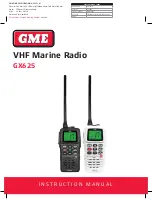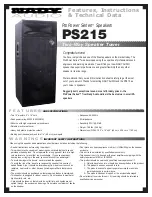
4
OPERATING RULES
Priorities
•
Read all rules and regulations pertaining to priorities and
keep an up-to-date copy handy. Safety and distress calls
take priority over all others.
•
You must monitor Channel 16 when you are not operating
on another channel.
•
False or fraudulent distress calls are prohibited under law.
Privacy
•
Information overheard but not intended for you cannot
lawfully be used in any way.
•
Indecent or profane language is prohibited.
RADIO OPERATOR QUALIFICATIONS
A certificate of proficiency is required to operate a VHF marine
radio. The certificate shows that the holder understands distress
and safety procedures, knows how to respond to an emergency
call and helps to ensure that your messages are understood by
others.
The minimum qualification is generally the Short Range
Operators VHF Certificate of Proficiency (SROCP) however in
Australia a new Australian Waters Qualification (AWQ) has
been introduced for marine radio users who only operate VHF
marine radios in Australian Territorial Waters.
A person who doesn’t hold a certificate may operate a VHF
radio if they are in the immediate vicinity of the certified
operator and radio so that they can step in and take over if
necessary
Persons operating a VHF marine radio without holding an
appropriate qualification or being under the supervision of an
appropriately qualified person, may be breaching the Radio
communications Act.
RANGE
The range of VHF transmissions depends on antenna height,
transmitter power and the terrain over which the signals
pass. For a 5 watt handheld radio like the GX625, ship
to ship communications up to 5 nautical miles should be
possible. Using an external antenna should allow ship to ship
communication of 8 nautical miles or more. Ship to shore
ranges will often be greater due to the increased height of the
shore antenna.
CHARGING THE BATTERY PACK
The GX625 has a rechargeable 1200mAh Li-Ion battery pack.
To charge the battery, plug the AC charger unit into the mains
supply and plug the DC connector into the charging cradle.
Place the GX625 into the cradle for charging. The battery
should charge in around 2 hours.
Removing the battery pack
To remove the battery pack, lift the locking lever at the base of
the battery pack and rotate. Lift the battery pack from the base
of the radio and slide the battery pack away from
the radio.
To re-fit the battery pack, slide the top of the battery pack
in towards the radio then press the base of the battery pack
downwards against the battery contacts. Rotate the battery
lever upwards and press into place so that it clicks firmly.





































